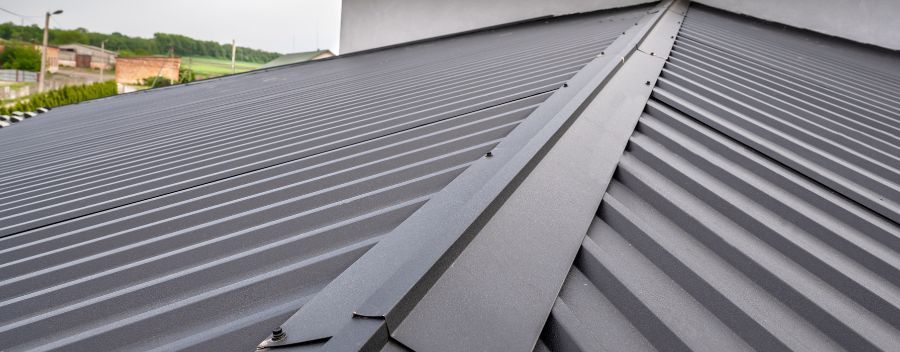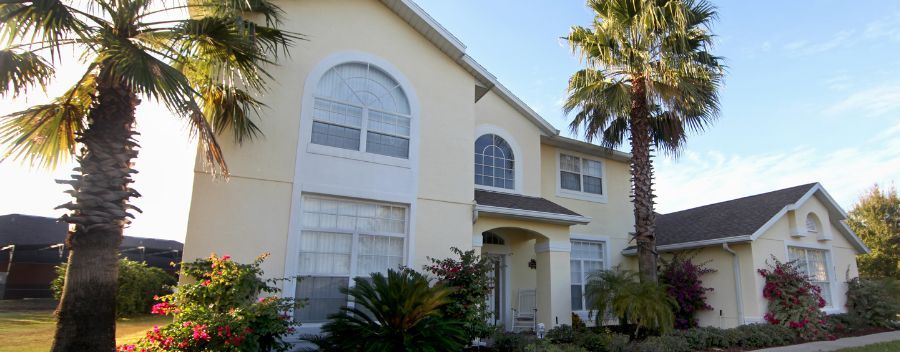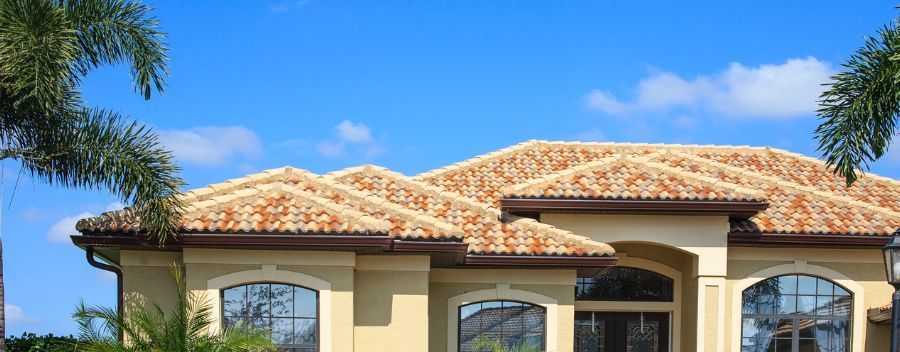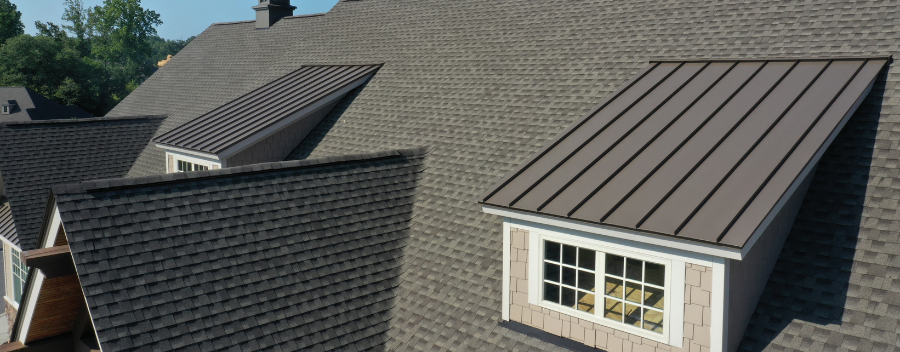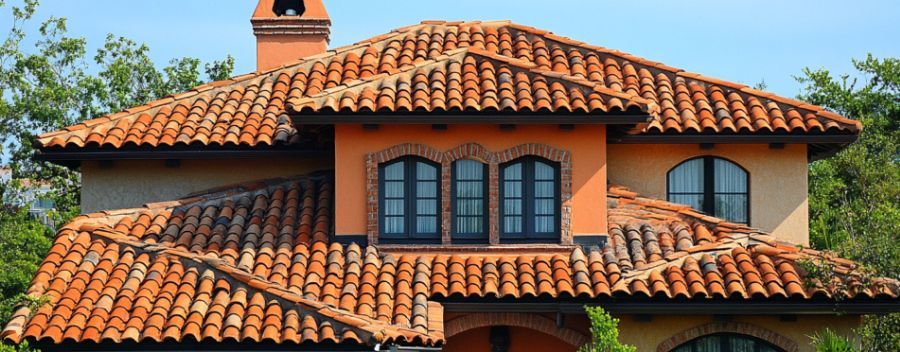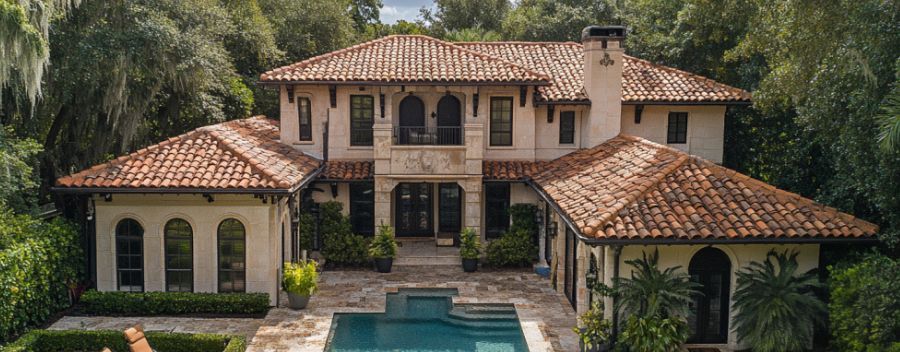What Is the Average Cost of a Metal Roof Installation in Fort Myers?
The average cost of a metal roof installation in Fort Myers ranges between $16,000 and $28,000, with most homeowners spending around $19,000. Your total price will depend on your roof size, material type, and installation complexity. Whether you’re upgrading from asphalt or starting fresh, knowing what affects pricing can help you budget smartly and avoid surprises.
Let’s dive into what you can expect to pay and, more importantly, what you get for that investment.
What Affects the Cost of a Metal Roof Installation in Fort Myers?
Every roofing project is unique. Still, several major factors consistently influence pricing in Fort Myers:
1. Roof Size and Pitch
Your roof’s size is the most direct driver of cost. Metal roofing is priced per square foot, with the average installation cost around $11 per square foot, and a range from $6 to $16 per square foot.
Here’s a breakdown of estimated pricing based on common roof sizes:
| Roof Size (sq. ft.) | Average Cost | Estimated Range |
| 1,200 sq. ft. | $13,200 | $7,200 – $19,200 |
| 2,000 sq. ft. | $22,000 | $12,000 – $32,000 |
| 3,000 sq. ft. | $33,000 | $18,000 – $48,000 |
The more surface area your roof covers, the more material and labor is required. And if your roof has dormers, valleys, chimneys, or skylights, expect the total to lean toward the higher end of the pricing spectrum due to the added complexity.
2. Type of Metal Roofing
The style and quality of your metal roof also impact cost:
- Corrugated Metal: $6 to $10 per sq. ft.; affordable but less attractive.
- Sheet Metal: $7 to $11 per sq. ft.; practical and durable.
- Metal Shingles: $10 to $14 per sq. ft.; offer a textured, upscale look.
- Standing Seam: $12 to $16 per sq. ft.; sleek, weather-tight, and modern.
Higher-end types, like standing seam or painted stainless steel, offer enhanced durability and curb appeal, but with a higher upfront price tag.
3. Type of Steel Material Used
There are multiple types of steel roofing materials available, and each comes with its price point:
- Galvanized Steel: $10 to $16 per sq. ft.
- Painted Steel: $7 to $13 per sq. ft.
- Stainless Steel: $10 to $16 per sq. ft.
- Stamped Sheet Metal: $7 to $12 per sq. ft.
Painted or coated options may increase your upfront cost, but they can reduce maintenance needs and enhance corrosion resistance, an important factor in Florida’s humid climate.
4. Labor and Installation Costs
Labor typically accounts for 40% to 60% of the total project cost. For a standard Fort Myers home, that’s around $7,600 to $11,400.
Why such a wide range? The shape of your roof, its accessibility, and even surrounding landscaping can slow down the crew and push up labor charges.
5. Roof Removal and Preparation
Before new metal panels are installed, your old roof often needs to come off. Tear-off and disposal typically cost between $1,000 and $5,000, depending on:
- Number of layers being removed
- Condition of decking underneath
- Dumpster and cleanup services
6. Permits and Inspections
Most Fort Myers roofing projects require permits. These usually range from $250 to $500 and are necessary to ensure local code compliance and avoid costly penalties. A final inspection is also common and may be part of your roofer’s full package.
7. Unexpected Repairs
Once the old roof is removed, hidden issues may emerge. If your plywood or underlayment is damaged, replacement may cost between $2 and $5 per square foot. It’s wise to budget a contingency fund for these kinds of surprises.
Is a Metal Roof Worth the Investment in Fort Myers?
Short answer: yes.
While metal roofing has a higher upfront cost compared to asphalt, its benefits in Fort Myers make it a long-term value:
- Hurricane Resistance: Metal roofs handle strong winds better than most materials.
- Energy Efficiency: Reflective coatings reduce heat absorption, keeping your home cooler and lowering energy bills.
- Durability: Most metal roofs last 40 to 70 years.
- Low Maintenance: Resistant to mold, rot, and insects.
- Increased Home Value: A steel roof may offer a 55% to 80% return on investment (ROI) thanks to its lifespan and aesthetic upgrade.
Smart Tips to Save on Metal Roofing Installation
Want a quality roof without breaking the bank? Here are some cost-saving tips:
- Install During the Off-Season: Roofing companies may offer better rates in slower months like late winter.
- Choose Practical Materials: Corrugated or sheet metal is more affordable than standing seam or premium coated steel.
- Get Multiple Quotes: Collect at least three to five estimates to understand the market rate in Fort Myers.
- Avoid Hidden Fees: Ask upfront about costs for disposal, permits, inspections, and clean-up.
- Bundle Projects: If you need gutter installation or insulation upgrades, combining services may earn you a discount.
- Don’t Skip the Warranty: A longer warranty might increase the price slightly, but the peace of mind is worth it.
Metal Roofing Installation Done Right in Fort Myers
A proper metal roof installation involves more than just fastening panels. Here’s what you should expect from any reputable roofing crew:
- Site inspection to assess structure, ventilation, and layout
- Accurate estimate covering labor, materials, and timeline
- Roof tear-off, repair of any rot or damage
- Installation of waterproof underlayment and ventilation systems
- Precise alignment of metal panels or shingles
- Final inspection to confirm quality and local compliance
When installation is done properly, your metal roof becomes a long-term investment that can handle Fort Myers’ salty air, heavy storms, and intense sun for decades.
The Final Verdict on Metal Roofing Installation in Fort Myers
Expect to pay between $16,000 and $28,000 for a professionally installed metal roof in Fort Myers. The average cost is about $19,000, depending on roof size, design complexity, and material choice. From galvanized panels to high-end standing seam systems, the right metal roof can deliver exceptional durability, energy efficiency, and curb appeal.
But more than just materials, what matters is how the job is done. That’s why many Fort Myers homeowners turn to Boss Roofing Experts. Known for their attention to detail and commitment to lasting quality, they offer tailored roofing solutions that are built to withstand Florida’s extremes.
Explore metal roofing services in Fort Myers and schedule a no-obligation quote today.
Frequently Asked Questions About Metal Roofing
How Long Does a Metal Roof Last in Fort Myers?
Metal roofs usually last between 40 and 70 years, depending on the type of metal and the quality of installation. Stainless and galvanized steel are especially long-lasting in humid coastal environments like Fort Myers.
Is a Metal Roof Noisy When It Rains?
Modern metal roofs are not significantly noisier than other materials. With proper underlayment and attic insulation, rain noise is minimal and often comparable to that of asphalt shingles.
Can a Metal Roof Lower My Energy Bills?
Yes. Reflective coatings on metal roofs can help block radiant heat, lowering indoor temperatures and reducing your need for air conditioning during hot Fort Myers summers.
